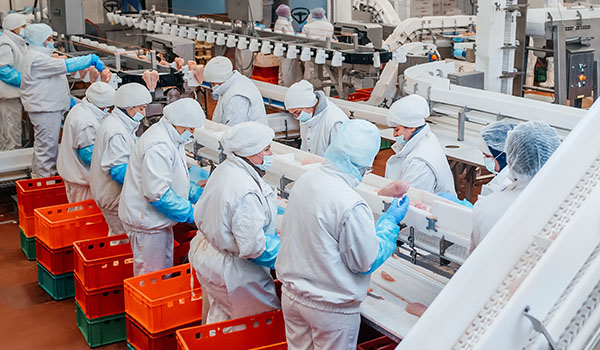
Continuous technological advances in the manufacturing industry have allowed food manufacturers to achieve high levels of efficiency and productivity, developing new and creative ways of improving process controls, so giving a much-needed boost to the economy and narrowing levels of variation within mass manufacturing.
Whilst this has provided fantastic advantages in product supply, it has created challenges in hygiene management in the processing environment as automated equipment often has access limitations, lower levels of internal maintenance and the system itself is often more reliable in itself.
My advice on ensuring maximum hygiene levels in automated food manufacturing settings includes looking at various elements from equipment design, to access as well as the cleaning materials and equipment used. My top 6 automated cleaning tips are as follows:
-
Design of product contact equipment
David Gee, a guest speaker at Spring 2019 Building Networking Automation Solutions claims that
…Adopting a hygienic and mechanically sympathetic approach, the difficulty bar can be dropped, thereby allowing you to rise to the toughest of automation challenges.
This should certainly be the case when looking for different technologies and ensure that the designer has taken hygienic design into consideration. This design must cover the initial build of the equipment and how each part will be kept in an acceptable standard to truly belong in a food manufacturing environment. Many tools are still being designed that prioritise mechanical suitability and level of performance over compliance with hygienic requirements, so creating a situation where the cost of non-quality will affect the overall productivity thus counterbalancing the expected productivity level.
-
Cleanability
Although an unsexy step in equipment development, it is so critical, but often overlooked. This also always involves the maintenance of expected hygiene during the lifetime of the equipment. European standard EN 1672-2 defines three production zones: the food zone, the splash zone and the non-food zone. Historical designs provided a straightforward way of cleaning, heavily based on manual cleaning. Automated equipment should provide the user with a logical and well-thought cleaning methodology, ensuring each of the production zones above have been considered. If the equipment is already in place and a gap in cleanability is identified, involve the manufacturer in the process of finding solutions to this issue. It is the manufacturer’s responsibility to ensure the equipment is fully cleanable.
-
Each piece of equipment is unique
Working in manufacturing for a while means one gets to understand that a company may have ten, theoretically, identical processing machines, but each one will have specific characteristics that need to be considered when developing a cleaning schedule. This includes maintenance frequency, wear and tear locations; even the location within the factory floor can affect how cleaning is carried out.
-
Automation goes further than manufacturing
Luckily, technology has moved on in many supporting areas of manufacturing, including performance monitoring, reporting tools, predictive maintenance, continuous hygiene indicators and hygienic tools to support cleaning. Taking advantage of hardware and software that will aid maintenance of hygiene standards allows priority to be given to the evaluation of trends in contamination and the improvement plans to tackle them. Technological advances such as CIP monitoring tools can prove to be very cost effective, providing real-time data and allowing the system to make intelligent changes such as the time needed for cleaning, chemical usage and many more aspects depending on areas the business wants to improve on.

-
Suitability of chemicals
Food manufacturing traditionally uses very harsh chemicals to ensure the risk of microbiological contamination is under control. Involve your chemical supplier as an advisor when looking to purchase new equipment or review cleaning procedures for existing ones, supplying them with information about materials used in the equipment and any detail on cleaning offered by the equipment manufacturer. A good supplier should be able to provide useful information regarding compatibility of chemicals in use, any new chemical development that may suit the new technology better and provide honest feedback if the equipment cleanability is not optimal so extra measures can be put in place.
-
Combine maintenance with hygiene
Maintenance of traditional and new technology should have a big focus on prevention of contamination. Training engineers in hygienic design, hygiene routine and relevant hazards on site will allow a conscious development of maintenance routine that will continue the minimisation of cross-contamination.